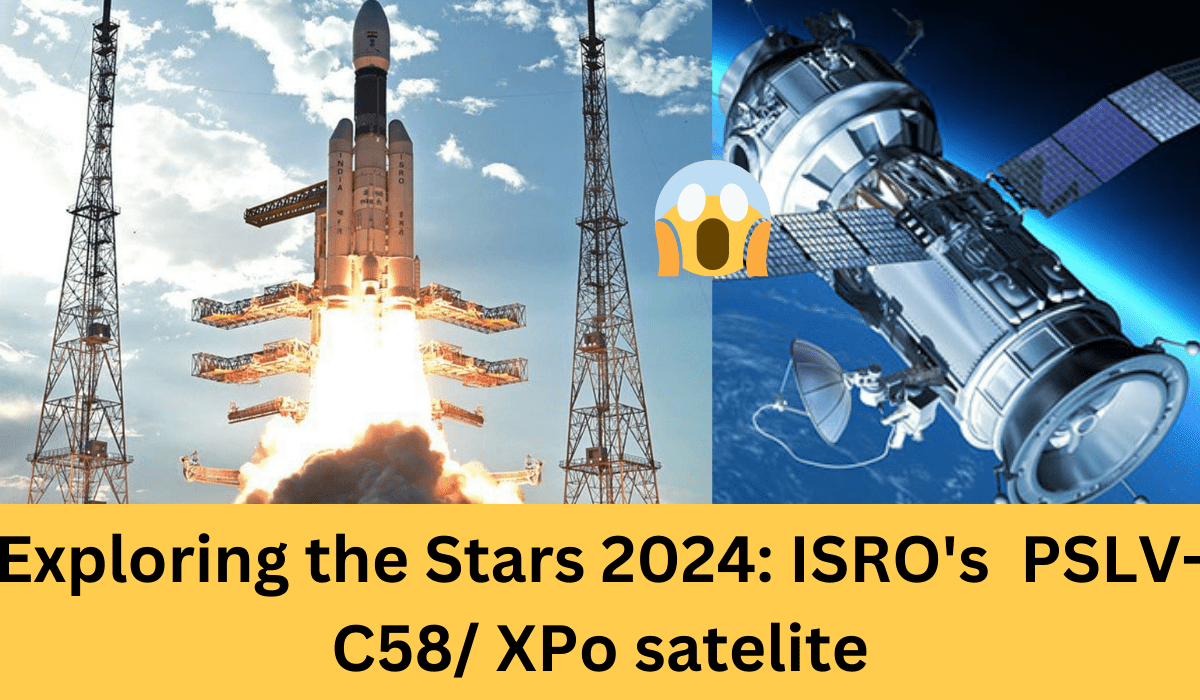Exploring the Stars: ISRO’s PSLV-C58/ XPoSat Launch Unravels Cosmic Secrets

The Indian Space Research Organisation (ISRO) achieved a remarkable milestone on January 1 by successfully launching its first X-Ray Polarimeter Satellite, known as XPoSat. This event took place at the Satish Dhawan Space Centre in Sriharikota, Andhra Pradesh, marking a significant step forward in India’s space exploration endeavors.
Pioneering X-Ray Polarimeter Satellite
The Polar Satellite Launch Vehicle (PSLV-C58) embarked on its 60th mission, flawlessly deploying XPoSat into Low Earth Orbit at 9:10 am. This scientific satellite is dedicated to space-based polarization measurements of X-ray emissions from celestial objects, making it a groundbreaking addition to ISRO’s scientific arsenal.
Crucial Insights into Celestial Bodies
The primary objective of the PSLV-C58 mission is to measure the polarization of X-rays in the energy band of 8-30 keV from approximately 50 potential cosmic sources. This mission will provide crucial insights into the radiation mechanism and geometry of celestial bodies, enhancing our understanding of the cosmos.
#ISRO begins 2024 in Style!
Successful launch of PSLV-C58/ 🛰 XPoSat Mission.
Proud to be associated with the Department of Space at a time when Team @isro continues to accomplish one success after the other, with the personal intervention & patronage from PM Sh @narendramodi. pic.twitter.com/cisbjpUYpH— Dr Jitendra Singh (@DrJitendraSingh) January 1, 2024
Key Payloads Enhancing Capabilities
XPoSat carries key payloads, including POLIX (Polarimeter Instrument in X-Rays) developed by the Raman Research Institute and XSPECT (X-ray Spectroscopy and Timing) constructed by the U R Rao Satellite Centre in Bengaluru. These instruments, designed to measure polarimetry parameters, signify a significant enhancement in India’s capabilities in space-based X-ray astronomy.
X-Ray Polarimetry’s Diagnostic Role
The significance of X-Ray polarimetry lies in its role as a diagnostic tool for understanding the characteristics of radiation from celestial sources. This mission positions India at the forefront of scientific research in space-based X-ray astronomy, complementing previous efforts focused on imaging and time domain studies.
PSLV-C58/XPOSAT MISSION:
The launch of XPoSat by PSLV-C58 is accomplished successfully.
The vehicle has placed the satellite precisely into its intended orbit.#XPoSat #PSLV58 pic.twitter.com/6rIyiWENAl
— ISRO InSight (@ISROSight) January 1, 2024
Continued Success in 2023
This achievement follows India’s remarkable accomplishments in 2023, including the successful soft landing of Chandrayaan-3 on the Moon’s south pole and the launch of Aditya-L1, India’s first solar mission. These endeavors showcase India’s commitment to pushing the boundaries of space exploration and scientific discovery.
Ambitious Goals for the Future
Looking ahead, India has ambitious goals, including the Gaganyaan Mission, the establishment of the ‘Bharatiya Antariksha Station’ by 2035, and the mission to send the first Indian to the Moon by 2040. These endeavors underscore India’s commitment to exploring new frontiers in space and contributing significantly to global scientific advancements.





2 COMMENTS